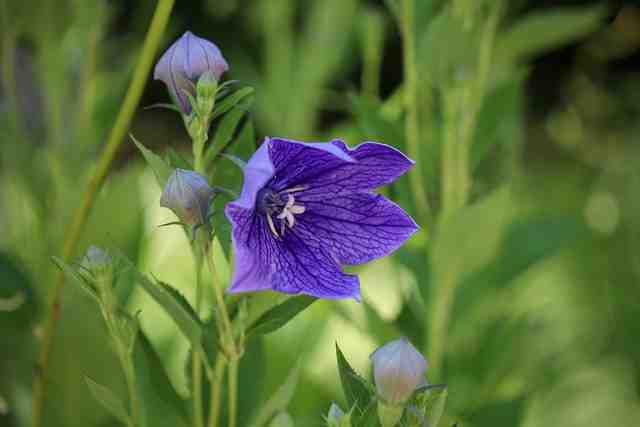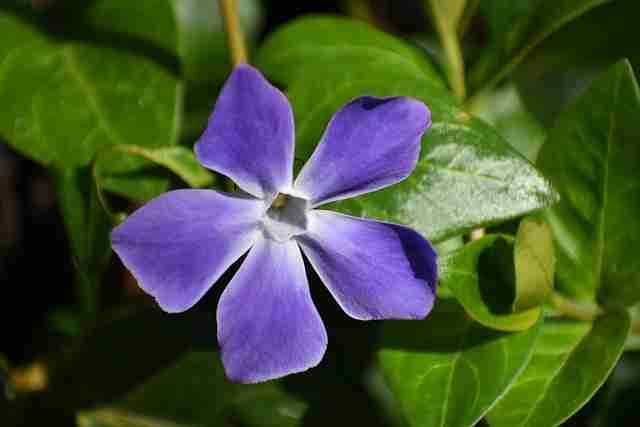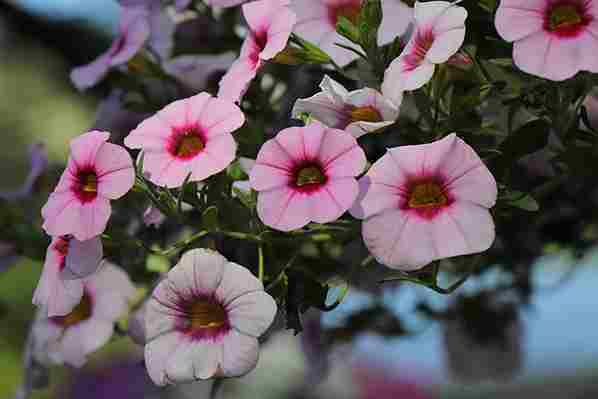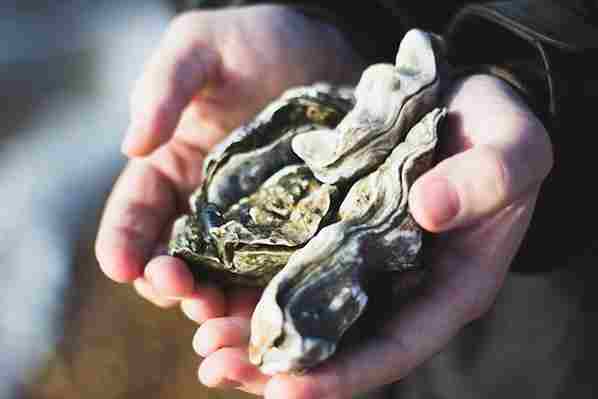Do Deer Eat Platycodon? (How To Stop Them)
Also known as balloon flowers, platycodon are known for their unique balloon-shaped blooms. Once they are established, they usually require little intervention. However, they can become a target for hungry animals. For an area that is populated by deer, you may want to know if your balloon flowers can get eaten.
So, do deer eat platycodon?
Well, YES and NO. Deer typically don’t like platycodon, especially if there are other food sources. But in periods of scarcity or when they’re very hungry, it is not rare to find them feeding on the plant.
In this article, we will look at some of the measures you can take to protect your platycodon from possible deer invasion.

What is Platycodon?
Platycodon grandiflorus or Balloon flower, is a species of herbaceous perennial known for its starry flowers and native to East Asia. One of its main highlights is its balloon-shaped flower buds, thus the name “balloon flowers.” The buds start off as little inflated balls before they unfurl into star-shaped flowers in shades of blue, pink, and white.
Platycodon boasts a long blooming period, making it a popular choice for gardeners who seek enduring beauty.
Do Deer Eat Platycodon?
Yes, deer can eat balloon Platycodon (balloon flowers) even though it’s not a favorite. They typically eat the plant when there’s a food scarcity or during periods of drought when their preferred foods are limited.
Young balloon flowers, with their tender foliage, are usually the ones that are most targeted. As they mature, their stems become woodier, making them less appealing. But they can still be eaten by a hungry deer.
There are various ways you can stop this from happening, including the use of repellents, ultrasounds, and fencing. We will look at each one of these methods later.
Is Platycodon Deer Resistant?
Yes, platycodon is considered deer resistant. However, the term “deer-resistant” does not imply that a plant is entirely safe from being eaten by a deer. Instead, it means that deer tend to avoid it unless they are really hungry and can’t find something else to eat.
This simply means that your platycodon plant is not entirely safe, even though it’s deer-resistant. So, you’ll need to take proactive steps to protect it from possible invasion.
Do Deer Like Platycodon?
Deer don’t like platycodon even though they may end up eating it sometimes. Young platycodon plants are usually more vulnerable since they have tender foliage.
One of the main reasons deer avoid platycodon or balloon flowers is because of their bitter taste. The plant contains saponins which are very bitter chemicals, making it less appetizing.
However, not all deer are sensitive to saponins, which is why some will end up eating the plant.
It is also believed that the thick stems and leaves of matured platycodon make them less attractive. Also, tall platycodon are usually more difficult to access, which can make a deer avoid the plant altogether.
Is Platycodon Edible?
Yes, platycodon is edible. In Korean and Chinese cuisines, the young leaves and stems are used in various dishes. The buds are also used in traditional herbal medicine, especially in China, and in herbal teas due to their purported health benefits.
As earlier indicated, the plant contains saponins, phenolic acids, flavonoids, and other beneficial chemicals.
How to Stop Deer from Eating Platycodon
If you’re worried that your platycodon will get eaten by deer or rabbits, there are a few things you can do to stop it from happening.
Fencing
The first one is to set up a fence in the garden. You want the fence to be more than 6 ft. tall in order to effectively deter deer. You can use an electric, but it’s usually expensive and may require regular maintenance.
If you’re looking for ideas, we highly recommend the Tenax Select Deer Fence. It is made of polypropylene and doesn’t rust or corrode. It has a breaking load of 600 pounds and blends naturally into any landscape. The wide opening provides good visibility and ensures enough light comes through for the plants.
Repellents
Another way you can effectively deter deer from your balloon flowers is to use a repellent. Repellent Sprays release a scent or taste that is unpleasant to deer, which can keep them from eating the plant.
You can use natural deer repellents like garlic or hot pepper. But I’ve found commercial repellents to be more effective. A good example is the Deer Out Concentrate Deer Repellent.
Some Fun Facts about Platycodon
- Herbal use: In traditional medicine, platycodon roots have been used to alleviate respiratory issues and coughs.
- Medicinal properties: Platycodon has been studied for its potential anti-inflammatory and antioxidant properties.
- Cultural significance: In Korea, platycodon is known as “Doraji” and is considered a symbol of endurance and hope.
- Other names: Besides “balloon flower,” platycodon is also called “Chinese bellflower” and “Japanese bellflower.”
Conclusion: Do Deer Eat Platycodon?
In conclusion, deer don’t like platycodon, but they may still end up eating it, depending on the deer and the situation.
Platycodon contains saponins and other chemicals that give it a bitter taste, making it less palatable. However, it can still be eaten if the deer is hungry enough.
Also, young platycodon are more likely to get eaten since they have tender foliage.
The best plan of action is to take steps to protect your platycodon. And two methods we’ve found to be very effective are fencing and the use of deer repellents. It may also help to plant other deer-resistant flowers around your platycodon.





